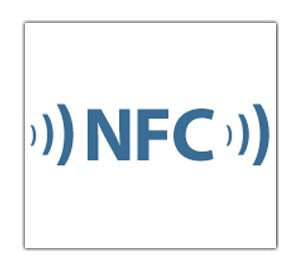 Near Field Communication, or simply NFC, is shaping up to be one of the hottest tech trends of the next few years. Mobile payment systems backed by major financial institutions are either already being tested or in plans to start tests, while smartphones with built-in NFC chips are making their way into the U.S. and Europe. But beyond payments, NFC has the potential to reach many other industries, from location-based services to ticketing and public transportation.
Near Field Communication, or simply NFC, is shaping up to be one of the hottest tech trends of the next few years. Mobile payment systems backed by major financial institutions are either already being tested or in plans to start tests, while smartphones with built-in NFC chips are making their way into the U.S. and Europe. But beyond payments, NFC has the potential to reach many other industries, from location-based services to ticketing and public transportation.
It’s not too far-fetched to imagine a world where all we need to carry around with us is a single do-it-all device. NFC could allow our smartphone to pay for products, open doors, as well as act as our personal ID or a virtual ticket for transport and attractions. Say goodbye to your keys, wallet, cards and any extra weight in your pockets.
Of course, there are loose ends that will need to be worked out before the technology actually catches on, like ensuring the proper infrastructure is there and addressing any security concerns. In this piece we are going to tell you the things that you should know about Near Field Communication and how it could make your life easier in the future.
What is Near Field Communication (NFC) ?
Near Field Communication (NFC) is a wireless connectivity technology that allows short-range radio communication between devices. Included in a small chip inside the device, NFC allows for mobile money transactions, data exchange, location tagging and wireless connections between two devices in very close proximity to one other, usually just a couple of centimeters apart.
Owing to the short-range nature of NFC, transfers are often completed by “tapping” devices either to another NFC enabled device or a payment system.
Though the technology has been around for about seven years, NFC only seems to now be coming into its own, with a veritable explosion of NFC powered devices and applications emerging over the course of the last couple of years alone. Indeed, according to a recent Juniper research report, by 2014, one in five smartphones will have NFC in them.
NFC services are set to proliferate rapidly over the next three years, with Juniper predicting almost 300 million NFC capable smartphones by the end of next year, more than half of which will be in North America, with Western Europe following closely behind.
The sudden growth spurt in the technology has much to do with its acceptance and adoption by many global mobile network operators, as well as giants like Google, RIM, Nokia, Samsung and more.
With more and more handset vendors integrating NFC chipsets, NFC payments, mobile coupons and smart posters are also slowly becoming more common amongst smartphone users in Western Europe, North America and other developed regions.
Last year Google announced its mobile Wallet initiative and partnered up with companies like MasterCard Inc. and Citigroup Inc. to embed technology into Android mobile phones that would allow customers to make purchases by tapping their phones over an NFC enabled point-of-sale system. Other companies have since followed suite, and the market for mobile payments is growing significantly, with numbers around $618 billion by 2016, according to an Edgar, Dunn & Co. report.
Of course, before the technology truly takes off in a global and ubiquitous way, many believe firms will have to think seriously about the business model structures they plan to use. With banks, mobile operators, transport companies and retailers all wanting a slice of the NFC pie, there’s little doubt the technology will see its fair share of service complexity issues too.
For example, if phones are now also wallets, who would one call to report a theft? One’s bank or the mobile operator?
See the Video below courtesy EETimes from Mobile World Congress 2012
Pin It














